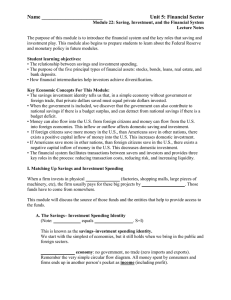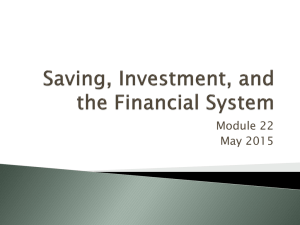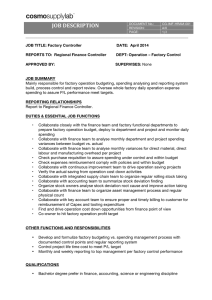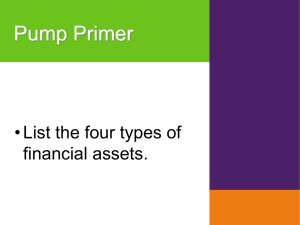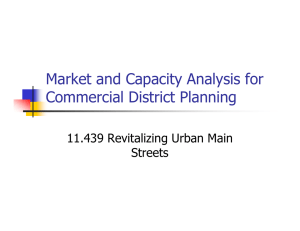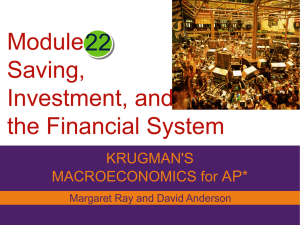Saving, Investment & Financial System Lecture Notes
advertisement
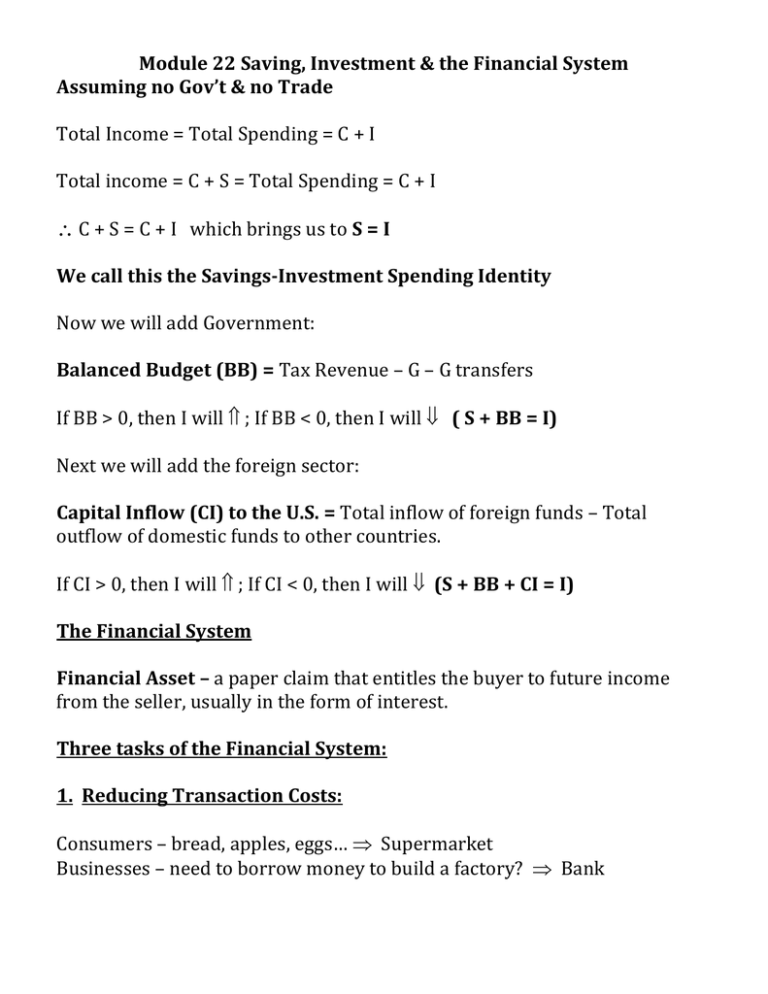
Module 22 Saving, Investment & the Financial System Assuming no Gov’t & no Trade Total Income = Total Spending = C + I Total income = C + S = Total Spending = C + I C + S = C + I which brings us to S = I We call this the Savings-Investment Spending Identity Now we will add Government: Balanced Budget (BB) = Tax Revenue – G – G transfers If BB > 0, then I will ; If BB < 0, then I will ( S + BB = I) Next we will add the foreign sector: Capital Inflow (CI) to the U.S. = Total inflow of foreign funds – Total outflow of domestic funds to other countries. If CI > 0, then I will ; If CI < 0, then I will (S + BB + CI = I) The Financial System Financial Asset – a paper claim that entitles the buyer to future income from the seller, usually in the form of interest. Three tasks of the Financial System: 1. Reducing Transaction Costs: Consumers – bread, apples, eggs… Supermarket Businesses – need to borrow money to build a factory? Bank 2. Reducing Risk The future is uncertain! There is risk in everything we do! Building a factory is not a guarantee that you will make $$! Should the owner risk all of his own $$? Diversification: This is the concept of spreading out your risk so that one bad event won’t destroy you! 3. Providing Liquidity This is all about how easily an asset can be turned into cash $$. A vintage Rolls Royce is very valuable but is not very liquid, why? A savings account on the other hand is VERY liquid If we are building our factory, we may not see cash flow for some time.
